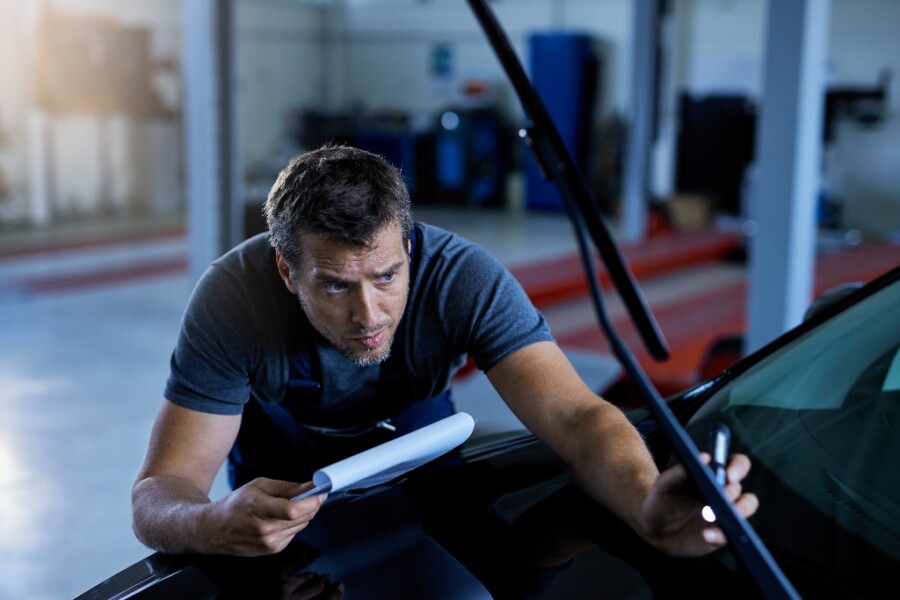La clásica señal triangular, que hace años se decretó por ley su obligatoria presencia en todos los automóviles, ya no es requerida como medida de seguridad delante de un accidente. Esta medida ha sido tomada por la Dirección General de Tráfico (DGT) a razón de la cantidad de accidentes provocados por el uso del triángulo del coche, una herramienta que debería ser para evitar siniestros adicionales, no crearlos.
No es obligatorio llevar triángulos en el coche, pero tampoco está prohibido. Con la nueva norma se quiere cambiar a la señal luminosa V-16. La idea es que la sustitución sea completa el día uno 1 de enero de 2026. Desde Ralarsa, taller de lunas, te hablaremos de cómo afecta esta nueva normativa a los conductores. ¡Sigue leyendo para no perderte nada!
¿En qué consiste la nueva normativa?
La publicación en el BOE del Real Decreto 159/2021 recoge que se puede utilizar tanto el triángulo de señalización como la señal V-16. Sin embargo, a partir del 1 de julio de 2023 ya no es obligatorio el uso del triángulo. Esta medida fue anunciada por la DGT, cuyo período de transición completa se extenderá hasta el 1 de enero de 2026.
Una vez empezado este periodo de recambio, solo en las vías convencionales (carreteras de un solo sentido) todavía es obligatorio llevar triángulos en el coche. No llevar los triángulos en este tipo de carreteras puede acarrear multas económicas de hasta 200 euros. En carreteras, autopistas y autovías ya no es necesario el uso de la señal, por lo que no puede comportar una multa.
España es uno de los primeros países en aplicar esta nueva reglamentación de la seguridad vial, lo que nos da a entender que, en la gran totalidad de los países vecinos, la señal triangular se mantiene como un dispositivo obligatorio. Esto puede conllevar multas económicas, de cantidades diferentes según el país en el que nos encontramos, si salimos del país sin ella.
¿Cómo implementar la señal luminosa V-16?
En sustitución de la clásica señal reflectante triangular, la DGT apuesta por la señal luminosa V-16. La señal luminosa V-16 es un pequeño dispositivo luminoso de color naranja o amarillo que tiene la capacidad de alumbrar en 360º, siendo uno de los elementos del kit seguridad coche para garantizar un viaje seguro. Puede emitir luz de manera intermitente y continua en todas direcciones durante aproximadamente treinta minutos. Puede alimentarse con una batería o pila y tiene una duración mínima de 18 meses.
A la hora de obtener la señal luminosa V-16, se puede encontrar en cualquier taller, gasolinera o tienda especializada en el automóvil con un coste que fluctúa entre los 20 y 50 euros. Su uso es sencillo, la parte inferior tiene una ventosa que le permite pegarse a cualquier superficie del coche. Idealmente, se tiene que colocar en la parte superior de la zona del conductor para que no sea necesario salir del vehículo.
Lo más novedoso de esta reglamentación es que se puede conectar a la plataforma DGT 3.0. Esto quiere decir que otros conductores pueden ver en tiempo real a través de los paneles de mensaje en la carretera la ubicación del coche, con el fin de transmitir precaución. La señal luminosa V-16 se debe guardar en la guantera del coche para que la persona conductora no tenga que salir del vehículo si no es necesario.
En Ralarsa nos preocupamos por tu seguridad
Desde Ralarsa, taller de cristales para automóviles, uno de nuestros mayores compromisos es velar por la seguridad de los automovilistas y de sus acompañantes. Por eso, en caso de sufrir algún inconveniente con el vehículo, ya sea con los neumáticos, parabrisas o cualquier otro aspecto técnico del coche, nuestra recomendación es permanecer dentro del vehículo hasta que los servicios de emergencia acudan a la ayuda.
Si, por algún motivo u otro, no se puede permanecer dentro del coche, el procedimiento óptimo es abandonar el vehículo por el asiento del copiloto, con tal de evitar transitar por la calzada o el arcén. En Ralarsa no hay accidentes que no se puedan arreglar, por eso lo más importante es tu seguridad. ¡Consulta todo lo que Ralarsa puede hacer por ti!





